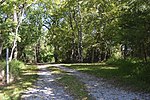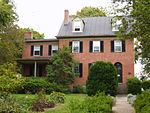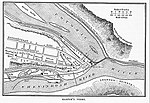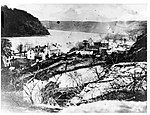Bolivar Heights Battlefield

The Bolivar Heights Battlefield in Jefferson County, West Virginia, partly in the town of Bolivar, is an American Civil War battlefield which, – because of its strategic position overlooking Harpers Ferry, where the U.S. had an armory, and its placement at the head of the Shenandoah Valley – was the site of five separate engagements between Union and Confederate forces: in October 1861, May and September 1862, June 1863, and July 1864. The battlefield lies partly on the 669-foot (204 m) Bolivar Heights plateau, but also includes School House Ridge to the west, and the slopes of both, which meet at Bakerton Road. The site was also used by the armies as a campground, and, in 1864, as a Union corral and wagon yard. The battlefield is now part of the Harpers Ferry National Historical Park, and features informational signs, cannons and a preserved defensive trench.
Excerpt from the Wikipedia article Bolivar Heights Battlefield (License: CC BY-SA 3.0, Authors, Images).Bolivar Heights Battlefield
Prospect Avenue,
Geographical coordinates (GPS) Address Nearby Places Show on map
Geographical coordinates (GPS)
| Latitude | Longitude |
|---|---|
| N 39.328055555556 ° | E -77.758055555556 ° |
Address
Prospect Avenue 342
25425
West Virginia, United States
Open on Google Maps










